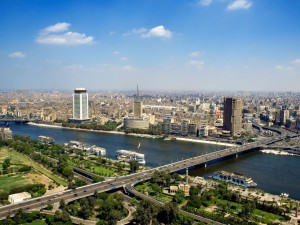 Italian exports to Mena area (Middle East and North Africa) has doubled in ten years. From 2001 to 2013 the volume has reached total amount of around 44 billion euro and covering more than 11% of the total Italian export, according to the latest Report on the Economic relations between Italy and the Mediterranean area, published by SRM, research centre based in Naples.
Italian exports to Mena area (Middle East and North Africa) has doubled in ten years. From 2001 to 2013 the volume has reached total amount of around 44 billion euro and covering more than 11% of the total Italian export, according to the latest Report on the Economic relations between Italy and the Mediterranean area, published by SRM, research centre based in Naples.
Numbers and percentages contained in the report show , in terms of commercial and financial exchanges, as well as at infrastructural level. Speaking in details about export, the growth pace of Italian exports between 2001 and 2013 (+107%) was faster than that of United States (+58.6%) and France (+53.8%), which are some of Italy strongest competitors in the region. At the end of 2014, the projections indicate a substantial hold of this positive trend for Italian export (-0.6% compared to 2013). As for the analysis of trade interchange (import + export), with its 54.8 billion euro in trading with the area (end of 2013), after United States (62 billion euro) and Germany (more than 57 billion euro), Italy is the main partner of the countries lining the southern shores of the Mediterranean.
SRM research highlights also the moderate but steady growth of average GDP in North African countries, focusing in particular on Morocco, Tunisia and Egypt (in the picture Cairo). In the last years (from 2011) instability originated from the political tensions due to the so called ‘Arab Spring’ had a negative impact on GDP growth (from 5.5% to current 2.3% in the outlook for this year). But the rate is expected to be up again to 3.6% in 2015 and rising again to 4% in 2016. “The positive prospects for growth in the medium term is increasing the interest of Italian companies for these countries”, say SRM researchers, who also estimated that, focusing on Morocco, Tunisia and Egypt, there are approximately 1,800 Italian-funded companies.
Even the number of transits in the main Mediterranean ports is growing: between 2000 and 2013 the number of vessel transits in the Suez Canal has more than doubled. Overall, 19% of the world trade transits within the Mediterranean basin, a share increasing from 15% at the end of the 90s.
Focusing on financial exchanges, the level of development of Mena financial systems is still below the European standards. The number of listed companies on different stock markets in the region is five times smaller than the number of companies listed on European stock exchanges and the market value is nine times lower. However, the performance of banks in the Mena region over the last few years has been better than those of the European banks, in terms of efficiency, profitability, and quality of the credit.



